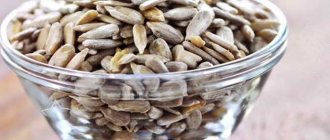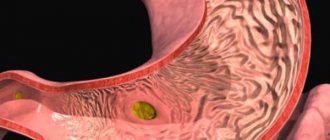A common complication during and at the end of cancer treatment is vomiting after chemotherapy. This is a very common condition of patients, which not only creates discomfort for the patient, but also disrupts the acid-base balance, water and mineral balance of the body. This side effect of the use of cytostatics cannot be ignored in order to avoid dehydration.
If you experience abdominal discomfort or a gag reflex after chemotherapy, you should report this reaction to your doctor.
Causes of nausea during chemotherapy
The main reason why nausea and vomiting develops after chemotherapy is intoxication of the body. During the administration of chemotherapy drugs and their accumulation in the body, a large amount of toxins are released, which are products of cell breakdown. Due to a slow metabolism, slagging develops, which causes lack of appetite, nausea and vomiting. The stomach and intestines are most susceptible to this process, and in the presence of previously diagnosed pathologies of these organs, the effects of chemotherapy can persist for a long time.
The second reason, which can also cause nausea and vomiting after chemotherapy, is irritation of the nervous system. The parts of the brain responsible for controlling the gag reflex begin to malfunction under the influence of highly toxic drugs. A false signal is created about the need to empty the stomach, which is almost impossible to stop without the help of special medications that suppress this process.
High fiber foods
| Products | Fiber content per 100 grams, g |
| Vegetables | |
| Pumpkin | 8 |
| Avocado | 8 |
| Eggplant | 5 |
| Tomatoes | 4 |
| Beet | 3 |
| Broccoli | 3 |
| Onion | 3 |
| Greenery | 2,6 |
| White cabbage | 2,5 |
| Carrot | 2,4 |
| Fruits and berries | |
| Apricots | 10,8 |
| Blackberry | 8 |
| Raspberries | 6 |
| Pears | 4,3 |
| Apples | 4,0 |
| Currant | 3 |
| Peaches | 3 |
| Tangerines | 2,7 |
| Kiwi | 2,5 |
| Nuts | |
| Chia seeds | 38 |
| Flax-seed | 27 |
| Almond | 15 |
| Pistachios | 10,3 |
| Sunflower seeds | 10 |
| Hazelnut | 9,4 |
| Sesame | 9,1 |
| Peanut | 8 |
| Walnut | 7,5 |
| Legumes | |
| Split peas (fresh) | 18 |
| Beans | 17,3 |
| Lentils | 15 |
| Chickpeas | 13,6 |
| Green peas | 12,3 |
| Beans | 7 |
| Mash | 5 |
| Cereals | |
| Bran | 44 |
| Sprouted wheat | 17 |
| Pearl barley | 13 |
| Buckwheat | 12 |
| Whole wheat bread | 8,5 |
| Barley | 8 |
| Brown rice | 5,5 |
| Oatmeal | 2,8 |
| White rice | 2 |
| Dried fruits | |
| Figs (dried) | 9,8 |
| Raisin | 9,6 |
| Prunes | 9 |
| Dried apricots | 7,3 |
| Dates | 6 |
The fiber content is significantly reduced during technological (flour production, rice cleaning) and culinary (stewing, boiling) processing of products.
If diarrhea develops, you should choose low-fiber foods. For example, a classic nutritional recommendation during diarrhea is the use of rice water, which not only fixes loose stools, but also, by enveloping the walls of the stomach and intestines, has a calming effect, relieving irritation. In addition, rice contains a sufficient amount of nutrients and microelements.
It is important to remember that uncontrolled diarrhea is dangerous, since frequent loose stools lead to the body losing water and vital microelements. The developing imbalance can lead to serious consequences, including coma. Therefore, it is very important to maintain a drinking regime, and drink not only plain water, but also mineral water without gas (to replenish microelements). The daily volume of fluid consumed during chemotherapy should be at least 2 liters, and if diarrhea develops it can be increased to 2.5-3 liters. If you cannot cope with diarrhea on your own or the condition worsens, you should consult your doctor.
Types of nausea
Considering the clinical manifestations and intensity of symptoms, nausea during chemotherapy has several types:
- Acute - develops during the first day of chemotherapy, accompanied by severe vomiting and dehydration.
- Delayed - occurs 2-3 days after the administration of drugs, is accompanied by a moderate course, and the frequency of vomiting does not exceed 2-3 times a day.
- Previous – develops before the start of a course of treatment, which can be triggered by both a psychological factor and the effect of previous treatment, after which the body did not have time to recover.
- Sudden - develops without any prerequisites. It is practically not controlled by the body and requires complex treatment. Caused by extensive intoxication of the body and damage to the central nervous system. In some cases it cannot be completely stopped.
Considering the clinical manifestations and intensity of symptoms, nausea during chemotherapy has several types.
Adverse reactions are always indicated in the annotation for the drug, so the doctor notifies the patient about the possible consequences.
Is it possible to warn?
To prevent the development of nausea and vomiting from chemotherapy drugs, it is necessary to follow the rules of nutrition and fluid intake during treatment. Despite the lack of appetite, the number of calories consumed should correspond to the patient's weight and height. You need to take a lot of fluids and watch your stool to prevent digestion problems.
If any discomfort or vomiting reactions occur, you should immediately inform your doctor. Relieving attacks of nausea in the early stages of manifestation can prevent the progression of digestive disorders. Paying attention to yourself and your feelings helps maintain acid-base balance in the body and normal metabolism.
Nausea during chemotherapy is one of the key manifestations of adverse reactions. It develops due to intoxication of the body with drugs whose action is aimed at destroying cancer cells. In the presence of acute attacks of nausea and vomiting, symptomatic treatment is selected.
Factors that provoke nausea
There are several provoking factors that determine the appearance and intensity of nausea:
- The dose of the drug - the higher it is, the more the body suffers, and the longer the nausea and vomiting will persist.
- Type of drug – Some medications cause only mild nausea, while others cause prolonged bouts of vomiting.
- Method of administration - with drip and jet administration, the risks of nausea are reduced, and when using tablets and irritation of the gastrointestinal tract, the symptoms will be more pronounced and lasting.
- Individual characteristics of the body - some patients complain of nausea, while others cannot cope with prolonged vomiting.
- The interval between courses and their duration - the longer the chemotherapy lasts, the longer the side effects persist.
Characteristic signs of toxicosis can be provoked by odors that were previously tolerated calmly. Some food, drinks, toilet water and soap can provoke not only disgust, but also an attack of nausea.
What causes the side effects of chemotherapy and common side effects
Chemotherapy is a method of treating cancer, which is usually used in cases where the disease has already reached the stage of metastasis in the lymphatic and circulatory systems. Intravenous administration of antitumor drugs is aimed at destroying malignant tumors, but, unfortunately, healthy cells of the body are also exposed to this effect, only to a lesser extent. Such drugs are aimed at destroying pathological cells that divide and therefore grow much faster than healthy ones. Due to this difference in the division of normal and atypical cells, the former causes less harm than the latter, which are targeted by the destructive power of chemotherapy. But harm to the body is still caused to one degree or another. After such exposure, healthy cells can recover, but not completely and not as quickly as we would like. This is the reason for the occurrence of such undesirable reactions of the body.
A person undergoing chemotherapy should know that it is aimed primarily at destroying cancer cells, and side effects may appear only for a while until normally functioning cells are restored.
And during this difficult period, his life continues and nothing threatens it, although difficult conditions may arise that are completely surmountable with the help of modern medicine.
Body reactions such as nausea, vomiting, diarrhea are common phenomena after undergoing a course of chemotherapy treatment, and are associated with the fact that the cells of the gastrointestinal tract are highly susceptible to the destructive effects of chemotherapy drugs and react faster than others to this effect, as, incidentally, they are faster able and recover if the necessary conditions are created for this.
Such as:
- Based on an examination of the functioning of all body systems, the attending physician will prescribe premedication before the start of the course, and then the entire range of rehabilitation therapy measures after exposure to chemotherapy drugs;
- diet, diet and rules of behavior that will help overcome the difficulties of the period after the course;
- a good moral attitude always helps the body - the emotional state directly affects the state of the nervous system, and therefore all the processes occurring in it. Try to tune in to a positive perception of what is happening.
It all depends on the state of the body as a whole - some patients do not experience such unpleasant manifestations, but for others it becomes a painful ordeal, exhausting their strength.
Professional psychotherapeutic influence greatly helps the patient relieve emotional stress, eliminate nervousness, do what he loves, become more confident in himself and in a positive outcome of treatment.
Negative thoughts because such a diagnosis has been made and such a course of chemical therapy needs to be carried out leads to anxiety, a destructive emotional state that can provoke these undesirable consequences. Therefore, it is necessary to improve the patient’s psychological mood before treatment, and the person himself needs to tune in to the fact that everything will go well, and if any unpleasant phenomena are possible, they will pass quickly, the attending physician and close people will help him cope with all this.
At-risk groups
Nausea and vomiting after chemotherapy has its own characteristics in different patients. The following categories of patients are most susceptible to developing complications:
- Children and elderly people.
- Patients with a weak vestibular system who get motion sickness on buses.
- In the presence of chronic diseases of the digestive tract.
- If you are prone to allergic reactions.
- If less than 2 weeks have passed between chemotherapy courses, and the body has not had time to recover.
It has been found that nausea after chemotherapy depends on the degree and type of cancer. The smaller the tumor, the easier it is for the body to cope with the unpleasant effects of treatment.
What to do?
If nausea after chemotherapy lasts a long time and is accompanied by occasional vomiting, this is a sign of concern. First, you need to notify the doctor about this complication so that he can monitor such a patient. Simple rules of nutrition and daily routine help relieve vomiting:
- Drink at least 2 liters of water per day, which will speed up the removal of chemotherapy drugs from the body. Divide this volume of liquid evenly throughout the day.
- Half an hour before meals, drink 1 glass of water, but do not drink water during or after meals.
- The number of meals should be at least 5-6 times a day in small portions of food.
- Remove fatty, fried, smoked foods, quickly digestible carbohydrates and alcohol from your diet.
- Eat lean meats, chicken broths, and plenty of vegetables and fruits.
- Include foods rich in fiber and fermented milk in your diet.
- Do not lie down after eating.
- Engage in moderate physical activity, walking in the fresh air.
- Do not succumb to stress.
Return to contents
There are special patches that are glued to the skin and the drug is periodically absorbed into the blood throughout the day. This is a convenient remedy that does not require constant taking of pills, does not depend on food intake, and effectively makes it possible to get rid of the existing problem. But these medications also have side effects: drowsiness, loss of appetite, constipation, fatigue.
Medications are used only when other methods do not work, as they can disrupt the normal digestion process.
How long does nausea last after chemotherapy?
For each patient, the time frame and intensity are purely individual. There is no way to accurately determine how long nausea will last after chemotherapy. It all depends on the condition of the body, age and the presence of complications.
On average, the rehabilitation process takes 2-3 weeks. Nausea and vomiting decrease 3-4 days after the last administration of the drug. During this time, the remaining medication is eliminated from the body, and the person feels much better.
On average, the rehabilitation process takes 2-3 weeks. Nausea and vomiting decrease after 3-4 days
In cases where attacks of nausea and vomiting persist for a long time, it is necessary to establish the cause and select the most optimal treatment. You should not fight nausea on your own, since taking medications during the rehabilitation period can harm an already weakened body.
If the taste has changed
Many patients undergoing chemotherapy experience changes in their taste. This manifests itself in different ways. Flavor may be weakened, lost, or distorted, such as meat becoming bitter or fruits and vegetables acquiring a metallic taste. In any case, it causes suffering and is a common reason for refusing to eat.
To mitigate the severity of taste changes:
Treatment
Only an integrated approach to eliminating unpleasant symptoms will improve the patient’s overall well-being. This involves drug therapy, diet and some lifestyle recommendations.
Drug treatment
Drugs are prescribed that block the formation of the gag reflex in the cerebral cortex, including:
- Cerucal;
- Dexamethasone;
- Prednisolone;
- Kytril;
- Metoclopramide.
Cerucal is a drug that blocks the formation of the gag reflex in the cerebral cortex.
The choice of dosage and duration of treatment depends on the degree of nausea. On average, medications are used for 2-3 days, after which the patient’s condition stabilizes.
Anti-nausea tablets during chemotherapy should be combined with the main treatment, without causing the development of counter-reactions and allergic manifestations. For this purpose, all appointments are made by a doctor, based on medical history.
Diet
You should eat small meals, but often. Small portion sizes will reduce the load on the digestive tract and will also make food easier to digest. All foods and dishes that can irritate the stomach are excluded from the diet: spices, pickles and marinades, mushrooms, hot herbs and spices, fatty and sweet foods.
After eating, you should remain in an upright position for another 20-30 minutes, which will help food move smoothly through the digestive tract. Eating is prohibited before chemotherapy is administered.
You need to eat foods that do not cause disgust. After chemotherapy, some taste preferences change, so the patient’s wishes should be taken into account.
It is very important to drink plenty of fluids. Pure mineral water is a universal solvent, with the help of which all waste and toxins are removed from the body. You need to drink in small sips, but often. A full stomach can cause vomiting, so do not increase its volume.
Compotes and fruit drinks, especially those containing cranberries, lingonberries, black currants and lingonberries, will help overcome nausea even without medications. The acidified liquid has a beneficial effect on the digestion process and also saturates the body with vitamin C.
Some foods may suppress vomiting and nausea:
- lemon;
- mint;
- ice cream;
- cold water with ice;
- frozen fruits;
- banana.
Some foods can suppress vomiting and nausea, including lemon and mint.
Do not wear tight clothing around your waist as this will increase nausea. An integrated approach to treatment will allow you to overcome the unpleasant side effects of chemotherapy in the shortest possible time.
If you are constipated
Constipation is no less unpleasant than diarrhea and causes significant discomfort to patients. The approach to nutrition for constipation is diametrically different from that for diarrhea. If constipation develops, on the contrary, it is necessary to include more foods high in fiber in your diet. The daily diet of an adult should contain at least 20-25 g of fiber.
A glass of warm mineral water without gas on an empty stomach in the morning, freshly squeezed fruit and vegetable juices, fresh fruits and vegetables (for example, a salad of grated apples and carrots for breakfast) contribute to bowel movements. At the same time, we must not forget that during chemotherapy the daily volume of fluid consumed should be at least 2 liters, and in case of constipation it can be increased to 2.5–3 liters.
Thus, in most cases, it is possible to reduce the side effects of chemotherapy (nausea, vomiting, diarrhea, constipation) by adjusting the diet. However, if you are objectively malnourished, losing weight, or becoming weaker, you should consult with your doctor about the need to additionally replenish missing nutrients, vitamins and microelements. The optimal solution is to use specially developed mixtures for enteral nutrition that are balanced in their composition.
Prevention
Remedies for nausea after chemotherapy can vary greatly, but such a dangerous symptom of an adverse reaction should be monitored by a doctor. Unfortunately, it is impossible to completely prevent nausea. The following will help ease the condition:
- Cold drinks made from lemon and mint.
- Fractional meals.
- Elimination of overeating.
- Wear loose clothing, get proper rest and sleep.
- Frequently air the room.
Your doctor will tell you how to deal with nausea during chemotherapy without harming the body. Only with his permission can you take medications that block the gag reflex. Self-medication should be completely avoided, as it is dangerous to health.
Who is more susceptible
Nausea is predominantly a female condition, but no explanation has been found for this; perhaps hormones are to blame, because women accumulate a lot of experience of nausea throughout their lives.
It has been noticed that people with creative professions, intellectuals and well-educated people have a harder time with antitumor treatment; it is not for nothing that it is believed that “grief comes from the mind.”
Nausea is associated with the emetogenic potential of the cytostatic drug, but is always individual in its emotional coloring and severity of symptoms. Each patient reacts differently to the same chemotherapy drug.











